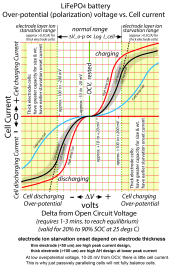Comment on first video: Hopefully this addition will start to be incorporated into other model BMS's.
On the BMS that provides enable control to active balance. Check if the enable control line from BMS disables external balancer for a moment when BMS is making cell voltage measurements.
The BMS still needs to manage cell voltages for low and high cell voltage shutdown. You don't want high active balancing current to influence the BMS cell voltage measurements. Balancer current influence will be worse on BMS cell voltage readings when there is little to no charge current dominating cell overpotential voltage bump up of cells due to charging current. Same charge current is applied to all cells, but balancing current is not equally applied. Five amps of balancing can slump or boost a cell voltage by 15-25 mV when there is little charge current to dominate cell overpotential voltage.
If it does shut down balancer when BMS makes voltage measurements, you could also share common sense lines to cells without worry of balancing current causing voltage drop on sense lines during BMS voltage measurements, greatly reducing the 'rats nest' of wires.
On the second video, my comment on the video was:
Not interested in any balancer that requires all cells to be above 3.4v first. Imagine when you have 16 cell system. Probability to lose the race for one cell to go overvoltage increases with 16 cells with a wider SoC spread likely.
Starting the race when first cell goes over 3.4v gives you more balancing time and better chance to achieve balancing before highest SoC cell hits overvoltage.




